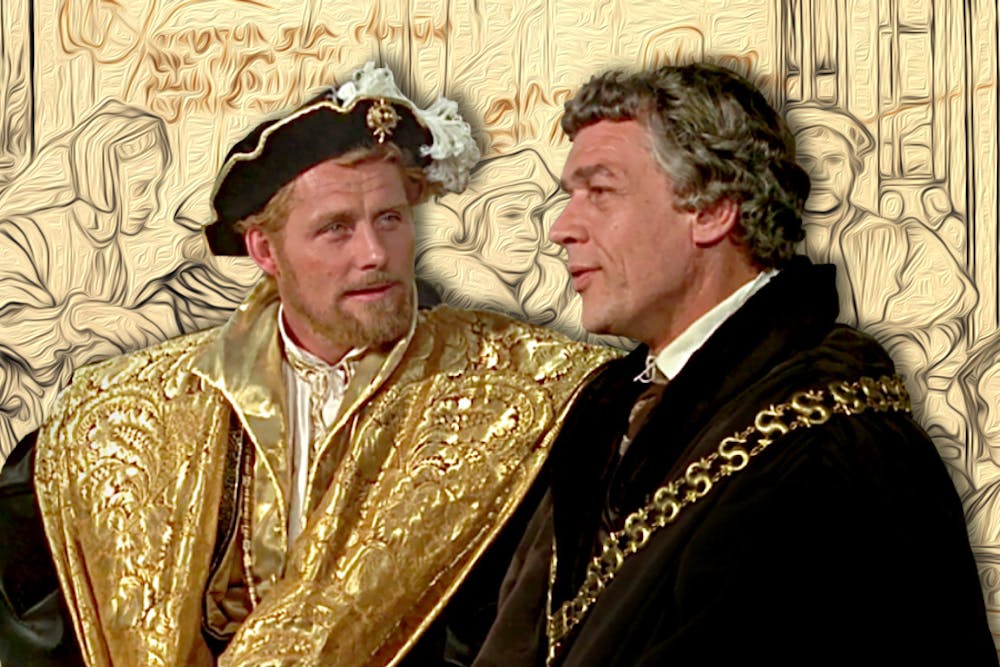“A Man for All Seasons” is the story of St. Thomas More’s last six years of life, detailing his fall from favor in the court of King Henry VIII. From his rise to the chancellor of England to his label as a traitor to his king, the film focuses on his refusal to ask Pope Clement XII to annul the marriage of Catherine of Aragon, leading to the creation of the Church of England and Henry VIII’s refusal to sign the Act of Supremacy, leading to More’s execution.
The writing is superb. The characters sing their lines in a beautiful rhythm, and there are too many great performances to name. However, Paul Scofield’s portrayal of More — a once a pious man and eventually a lawyer who could argue with anyone under the table — balanced both roles perfectly.
Orson Welles as Cardinal Wolsey is also a standout. Though he is only in three scenes, he perfectly characterizes a clergyman who holds more respect for his king than his God. His beady little eyes give me the creeps, and Welles’ signature booming voice gives him a larger-than-life presence that fills every scene he’s in — even if it’s only for a few scenes.
The movie is set on the edge of the epic movies of the 1950s and the personal dramas of the ’60s and ’70s. The score is barebones, the only music being that of the dances at court, allowing the writing to shine genuinely. The cinematography is a tad flat, as this was initially written to be a play, but it allows you to focus on what the actors are saying as shots tend to linger for multiple minutes, letting you really absorb what they’re saying.
The costumes are also incredible. From the vibrating red of Cardinal Wolsey’s cassock to Henry VIII’s outfit that looks like he walked right out of one of his portraits. More’s daughter and wife have amazing dresses that I’ll be dreaming about for years.
Though the movie focuses mainly on theological debates, it doesn’t come off as overly preachy, and it doesn’t shy away from showing the corruption in the Church at the time. The opening scene shows More sitting around with his friends as they joke about the Church’s current state. More’s son-in-law starts the movie off as a Lutheran and is shown to have legitimate concerns over the corruption of the Church. Scofield excellently presents a historically accurate account of the last three years of More’s life during this time of turbulence.
Unfortunately, though the film focuses on Henry VIII’s quest to get a divorce and remarry, we never really get to hear what the women have to say. Catherine of Aragon is only ever mentioned in the film and Anne Boleyn has just a handful of lines. A good portion of the movie ends up being a lot of men talking about what should happen without ever asking for the opinion of the women.
“A Man for All Seasons” does require you to be familiar with the history it is talking about — while watching, I heard someone asking their friend, “Wait, who is that?” The film doesn’t take the time to introduce the many characters that influenced the political goings on in England at that time, but a quick glance at St. Thomas More’s Wikipedia page should give you enough information to enjoy the film to the fullest. Even if you don’t look him up, it’s such an incredible movie that some slight confusion is worth it for two hours of amazing film making.










